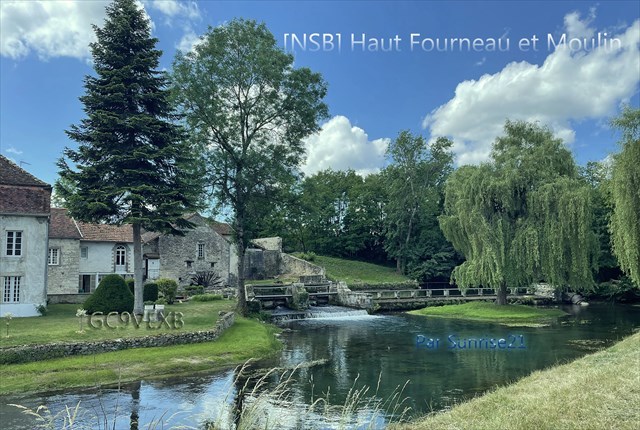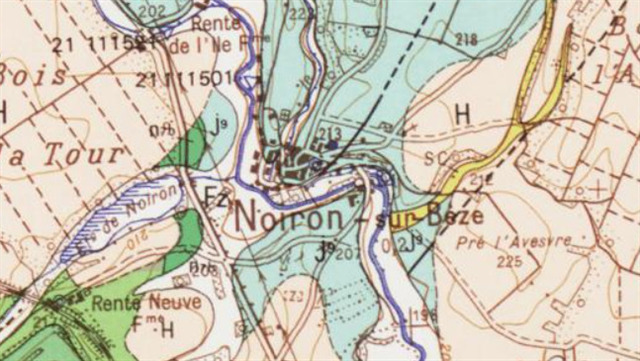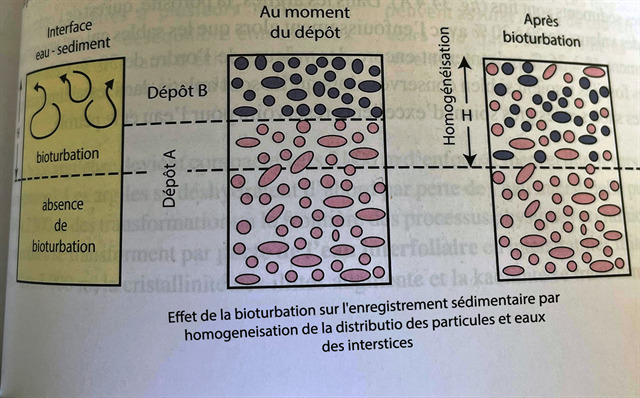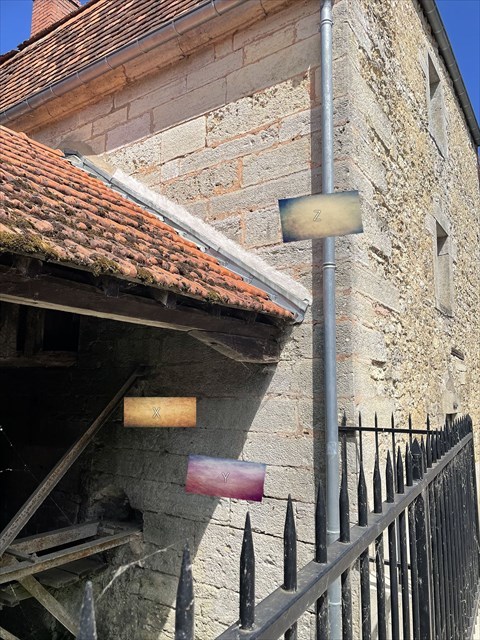MOULIN ET HAUT FOURNEAU DE NOIRON-SUR-BEZE

Situation:
Noiron sur Bèze,
Monument classé au patrimoine historique.
Déjà, à cet endroit, en 800, un moulin fonctionnait.
Il a appartenu pour des siècles à l'abbaye Bénédictine de Bèze. Il a fonctionné jusqu'en 1920.
Lors de la mise en marche du haut-fourneau , celui-ci était composé d’une dizaine d’ouvriers qui œuvraient à l’intérieur et une centaine à l’extérieur. Le four fabriqué par Licey-Duchon fonctionnait, à l’aide d’un système à piston, grâce à une roue hydraulique. Trente mille stères de bois étaient brûlés annuellement pour fabriquer jusqu’à 1 000 tonnes de fonte !
Le haut fourneau est le dernier construit en France entièrement en pierre de taille au XIXe siècle. Il est arrivé intact à nos jours.
Interessons nous justement à ces pierres avec lesquelles l’ensemble a été façonné.
Que nous dit la carte ?

J9. Portlandien. Calcaire de Spoy, fin compact ou à tubulures (25 à 40 m)
calcaires jaunes ou beiges très fins, bien stratifiés, intercalés de petits lits feuilletés argileux centimétriques à décimétriques (kaolinite et illite). Les calcaires, compacts dans les premiers mètres, renferment vers le haut des traces de bioturbation, des terriers (Thalassinoides) à l'origine des nombreuses tubulures de la roche. Ces calcaires à tubulures, plus fréquents à l'Est qu'à l'Ouest donnent par altération faciès caverneux, vacuolaire, dit pierre percée (Noiron-sur-Bèze, Mirebeau)
Définition
Bioturbation : ensemble de petits dérangements dans un sédiment dû à des déplacements d'organismes vivants : terrier, galerie, traces de creusement ou de reptation.
Une bioturbation est un signe d'oxygénation du milieu de sédimentation, les milieux anoxiques étant peu propices au développement de la faune.

ENGLISH
Situation:
Already, in this place, in 800, a mill worked.
It belonged for centuries to the Benedictine abbey of Bèze. It operated until 1920.
When the blast furnace was started, it was made up of about ten workers who worked inside and a hundred outside. The oven manufactured by Licey-Duchon worked, using a piston system, thanks to a hydraulic wheel. Thirty thousand cubic meters of wood were burned annually to produce up to 1,000 tonnes of cast iron!
The blast furnace is the last built in France entirely in cut stone in the 19th century. It has arrived intact to the present day.
Let us take a closer look at these stones with which the whole was fashioned.
What does the map tell us?

J9. Portlandian. Spoy limestone, fine compact or with tubing (25 to 40 m)
very fine yellow or beige limestones, well stratified, interspersed with small centimetric to decimetric clay laminated beds (kaolinite and illite). The limestones, compact in the first meters, contain towards the top traces of bioturbation, burrows (Thalassinoides) at the origin of the many tubings of the rock. These limestones with tubing, more frequent in the East than in the West give by alteration facies cavernous, vacuolar, known as pierced stone (Noiron-sur-Bèze, Mirebeau)
Definition
Bioturbation: set of small disturbances in a sediment due to the movement of living organisms: burrow, gallery, traces of digging or crawling.
Bioturbation is a sign of oxygenation of the sedimentation environment, as anoxic environments are not conducive to the development of fauna.

Rappel concernant les « Earthcaches »: Il n'y a pas de conteneur à rechercher ni de logbook à renseigner. Il suffit de se rendre sur les lieux et d'éxécuter les requêtes du géocacheur.
Loguez cette cache "Found it" et envoyez-moi vos propositions de réponses soit via mon profil, soit via la messagerie geocaching.com (Message Center), EN PRECISANT LE NOM ET CODE GC DE LA CACHE et je vous contacterai en cas de problème.
---
Reminder concerning "Earthcaches": there is neither a container to look for nor a logbook to sign.
Log in this cache " Found it " and send me your answers proposals or via my profile or via geocaching.com messaging (Message Center ) , BY PROVIDING THE NAME AND GC CODE OF THE CACHE and I will contact you in case of problems .
Grâce à la lecture du descriptif et votre observation, répondez aux questions suivantes :
Thanks to the reading of the description and your observation, answer the following questions:
Q1) Décrivez ce que vous voyez sous la zone masquée (aspect, texture, homogeneité) de la photo appelée question1

Q2) Grâce à votre réponse précédente, désignez moi sous quelle zone se trouve une pierre locale sur la photo appelée question 2

Q3) Obligatoire. Une photo de vous avec la roue du moulin en fond
Q1) Describe what you see under the masked area (appearance, texture, homogeneity) of the photo called question1

Q2) Thanks to your previous answer, indicate me under which zone is a local stone on the photo called question 2

Q3) Mandatory. A photo of you with the mill wheel in the background
JOYEUX & HAPPY EARTHCACHING !